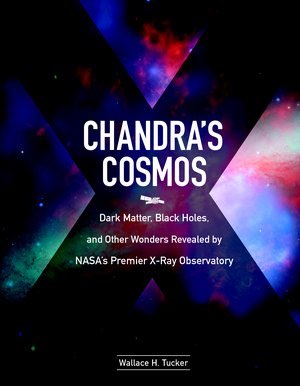Review: Chandra’s Cosmosby Jeff Foust
|
| Tucker, in the book’s introduction, agonizes over trying to define “cool” in identifying Chandra’s coolest discoveries. That is, perhaps, the wrong thermal metaphor here: given the energetic environments that create x-rays, the focus perhaps should be on the hot topics in Chandra science? |
Tucker splits the book in three parts. “Big” covers topics like dark energy, dark matter, and the large-scale structure of the universe. “Bad” covers black holes, from stellar-mass objects to the supermassive ones at the centers of galaxies like the Milky Way. “Beautiful” primarily covers the nebulae created by supernova explosions.
That division is imperfect: the supernovae that created the beautiful are also “bad,” while black holes may be an essential aspect of galaxy formation, which doesn’t sound bad at all. Tucker, in the book’s introduction, agonizes over trying to define “cool” in identifying Chandra’s coolest discoveries. That is, perhaps, the wrong thermal metaphor here: given the energetic environments that create x-rays, the focus perhaps should be on the hot topics in Chandra science?
Nevertheless, the book does a good job identifying the key science that Chandra has enabled. In his discussions Tucker provides significant background about the science of black holes, supernovae, and the like, in addition to the contributions from Chandra. And, yes, there are plenty of images from Chandra throughout the book to enhance those discussions.
There is, perhaps a bit surprisingly, very little about Chandra itself: no detailed discussion of the telescope’s history, how it operates, or its future. The book is squarely focused on the science it has achieved. That seems like a missed opportunity to describe a telescope that has helped astronomers better understand the universe, but it often overshadowed by Hubble and groundbased observatories.
Chandra is, by all accounts, still working well more than 17 years after its launch: in the latest “senior review” of the extended missions of NASA astrophysics spacecraft, Chandra, like Hubble, was treated separately from the rest, with scientists examining how to best use the telescope rather than whether the mission should be extended at all.
Chandra, along with its European counterpart, XMM-Newton, will hopefully last a long time, since there are few major x-ray astronomy missions in the pipeline: ESA is developing the Athena observatory for launch in the late 2020s, while NASA is considering a large x-ray astronomy mission called Lynx that likely would not be ready to fly until the early to mid 2030s, if it is selected for development at all. Japan lost its Hitomi x-ray observatory shortly after launch last year, but plans a replacement to fly in the early 2020s. It’s still Chandra’s Cosmos for years to come, hopefully.
